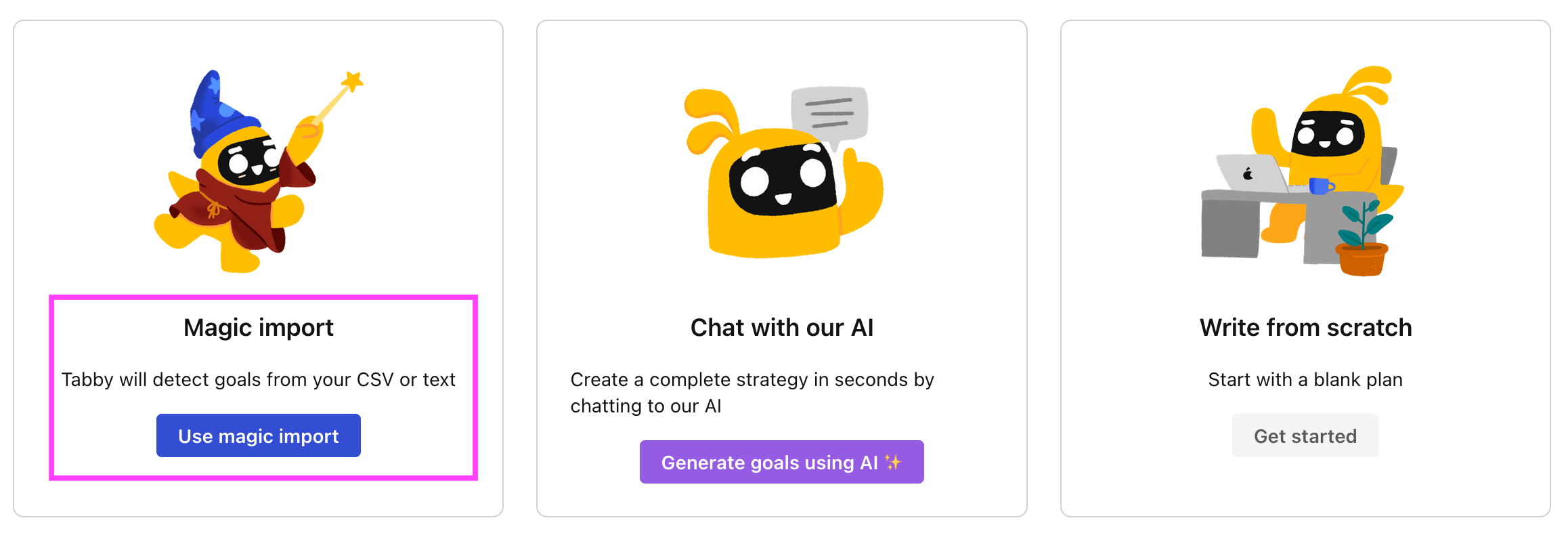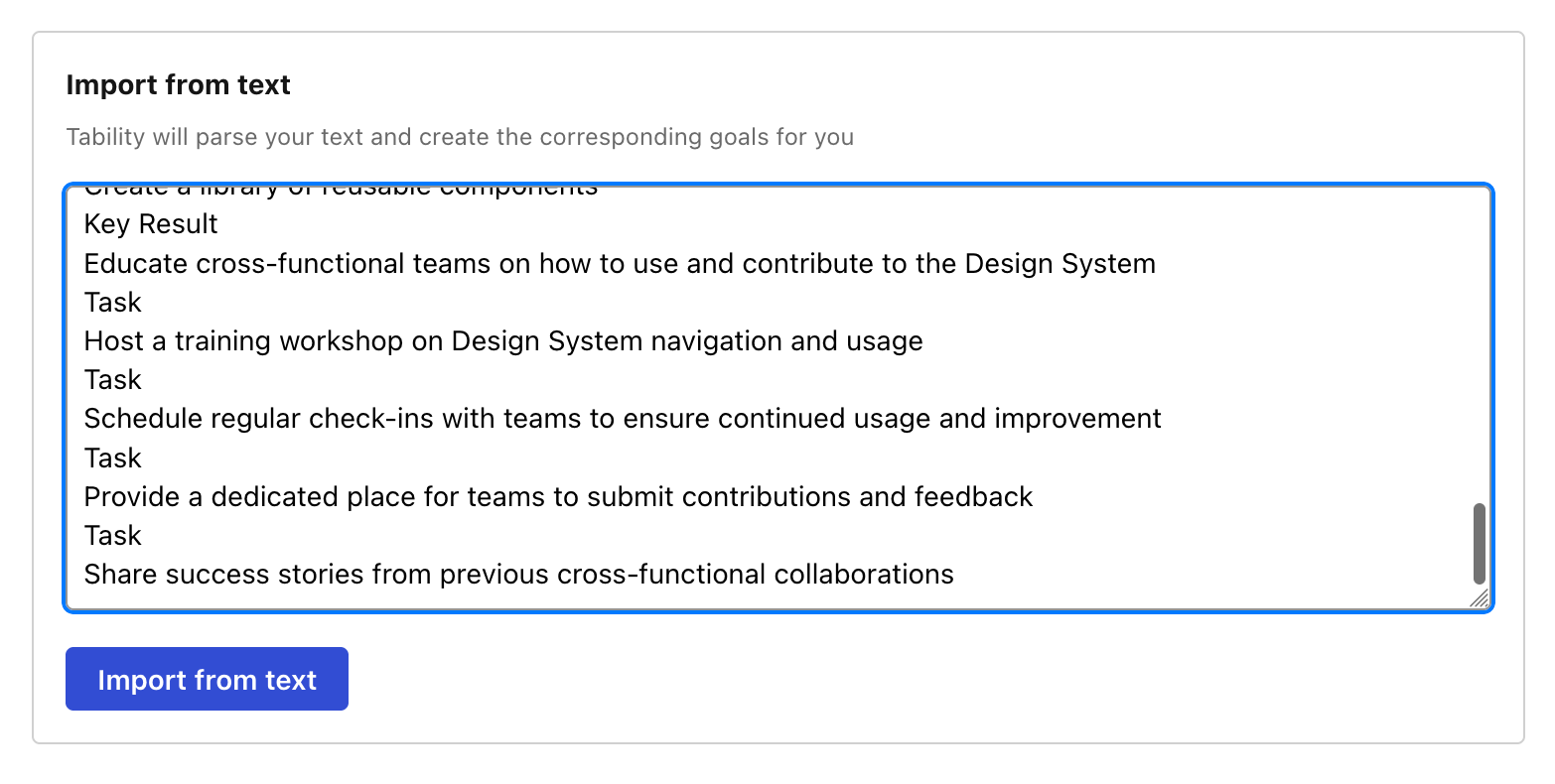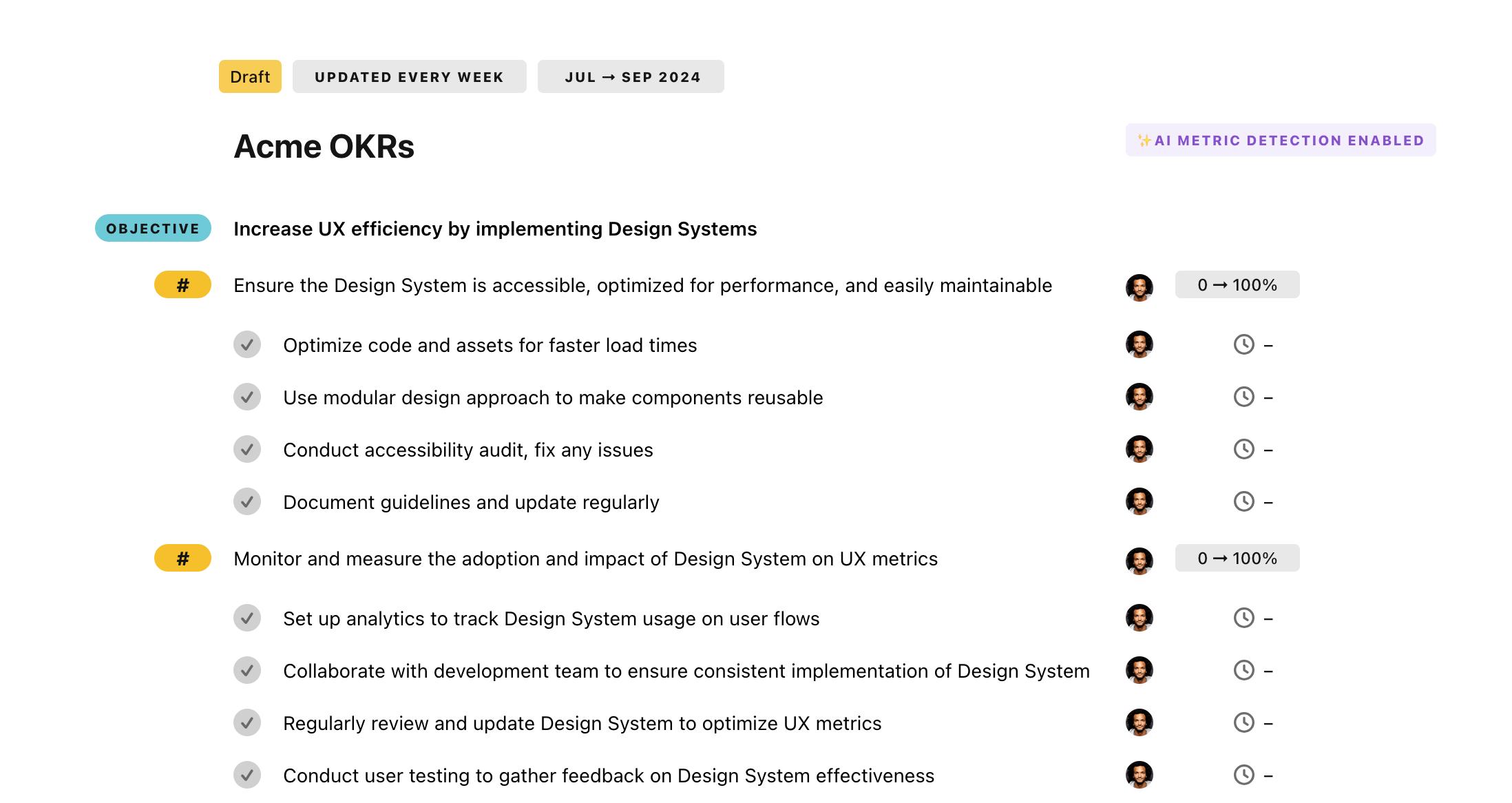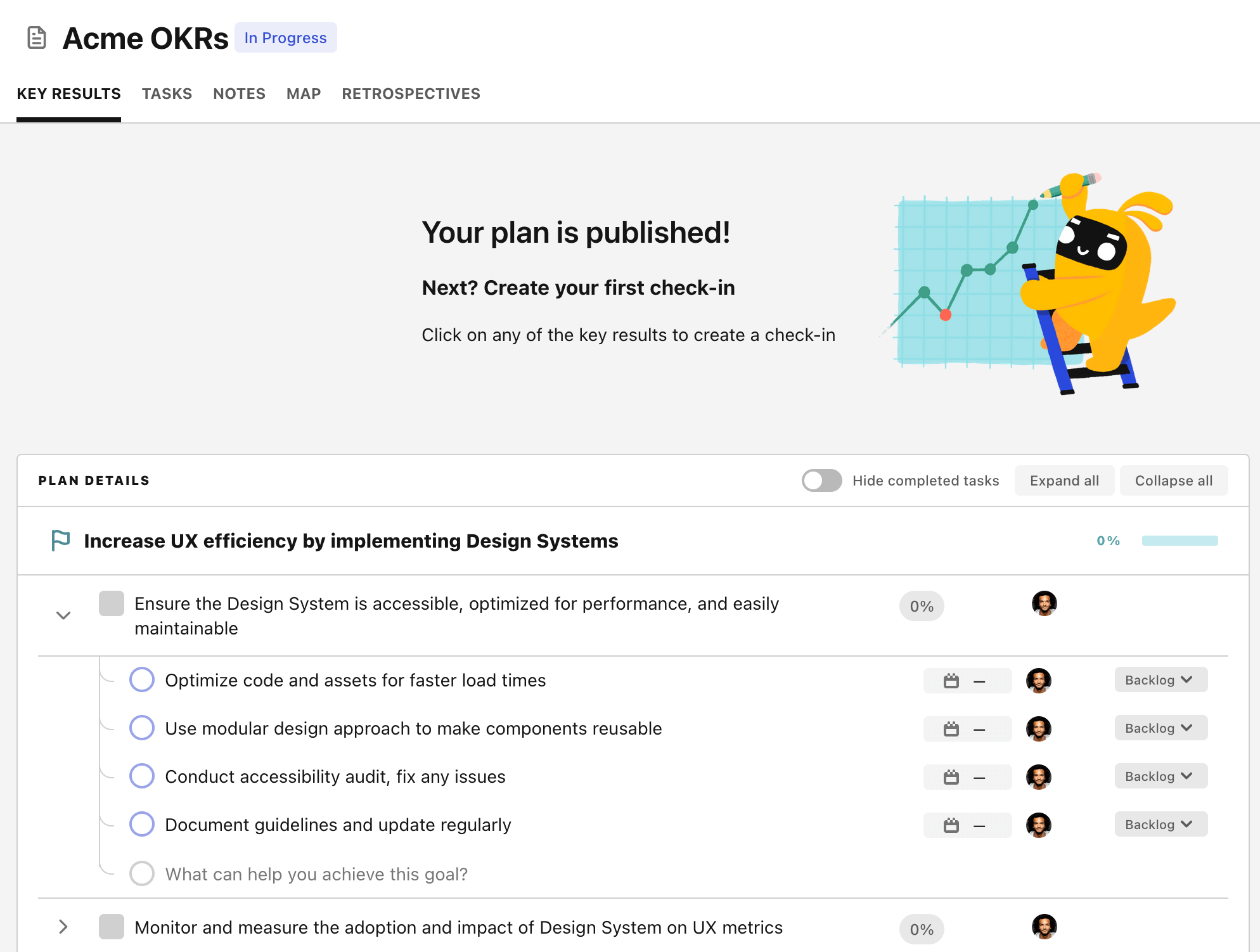OKR template to create an engaging educational plan for children
Your OKR template
Next, the plan seeks to identify and categorize as many as 12 core areas of children's learning by the fourth week. Metrics used to evaluate progress toward this outcome are set from 0% to 100%, however, no specific initiatives are stated for this task.
The third main outcome of this OKR is to develop 60% of the learning modules with interactive activities by week 6. Initiatives towards this goal include the design of interactive elements for each module, topic identification for the learning modules, and a comprehensive completion of the module development by the deadline.
Overall, the project ambitiously targets an intensive interaction with test users and an in-depth focus on designing a compelling educational plan laying a solid foundation for children's learning over multiple core areas, making it comprehensive, engaging, and suited to the recipients' learning capacities and needs.
ObjectiveCreate an engaging educational plan for children
KRBy week 8, pilot and get feedback on the plan from 50 test users
Gather and analyze user feedback
Launch the pilot plan to the test users
Identify and recruit 50 potential test users
KRIdentify and categorize 12 core areas of children's learning by week 4
KRDevelop 60% of the learning modules with interactive activities by week 6
Design interactive elements for each module
Identify topics for 60% of learning modules
Complete module development by week 6
How to edit and track OKRs with Tability
You'll probably want to edit the examples in this post, and Tability is the perfect tool for it.
Tability is an AI-powered platform that helps teams set better goals, monitor execution, and get help to achieve their objectives faster.
With Tability you can:
- Use AI to draft a complete set of OKRs in seconds
- Connect your OKRs and team goals to your project
- Automate reporting with integrations and built-in dashboard
Instead of having to copy the content of the OKR examples in a doc or spreadsheet, you can use Tability’s magic importer to start using any of the examples in this page.
The import process can be done in seconds, allowing you to edit OKRs directly in a platform that knows how to manage and track goals.
Step 1. Sign up for a free Tability account
Go tohttps://tability.app/signup and create your account (it's free!)
Step 2. Create a plan
Follow the steps after your onboarding to create your first plan, you should get to a page that looks like the picture below.

Step 3. Use the magic importer
Click on Use magic import to open up the Magic Import modal.
Now, go back to the OKR examples, and click on Copy on the example that you’d like to use.

Paste the content in the text import section. Don’t worry about the formatting, Tability’s AI will be able to parse it!

Now, just click on Import from text and let the magic happen.

Once your example is in the plan editor, you will be able to:
- Edit the objectives, key results, and tasks
- Click on the target 0 → 100% to set better target
- Use the tips and the AI to refine your goals
Step 4. Publish your plan
Once you’re done editing, you can publish your plan to switch to the goal-tracking mode.

From there you will have access to all the features that will help you and your team save hours with OKR reporting.
- 10+ built-in dashboards to visualise progress on your goals
- Weekly reminders, data connectors, and smart notifications
- 9 views to map OKRs to strategic projects
- Strategy map to align teams at scale